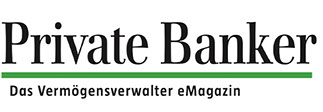

Value Column von Hans Peter Schupp
22 JANUARY 2024
Finally, it will all come to a happy end
For Europe, we expect several quarters of negative or at least stagnating growth in 2024. How long this phase lasts depends on several factors, but the most likely scenario is that the Eurozone will enter a mild to moderate recession before returning to growth towards the end of 2024.“ These are the expectations of US asset manager T. Rowe Price. We see things differently. We are more optimistic because some factors and indicators speak a different language.
„Hot-rolled coils“ prices start to rise
An example: If you drive on a highway, you will occasionally see trucks with huge steel strip coils as freight. These are technically known as „hot-rolled coils“. And believe it or not, these are also traded on the stock exchange as „hot-rolled steel coils“. As a futures contract on the „NYMEX US. Midwest Domestic Hot-Rolled Coil Steel Index“ (CRU Index).
So what’s the message? Everyone is talking about the bad state of the economy is. But: the price of hot-rolled coils has risen again by more than 50 percent since October last year. And steel is an early indicator of the state of the economy. After all, steel is used in an incredible number of products, from cars and washing machines to computers. And the demand for those steel products keeps rising.
Unemployment has almost halved in the last 10 years
Another example: the fear of rising unemployment in the wake of restructuring and company bankruptcies. However, if we look at the hard facts, a different picture emerges. The general unemployment rate in the Eurozone has almost halved from 12.2 to 6.5 percent over the last 10 years. And the figure for unemployment young people has also improved considerably from 25.5 to 14.9. Not bad for „Old Europe“, as US Secretary of Defense Donald Rumsfeld once contemptuously called the EU. And not so bad for a flagging economy, is it?
Inflation is rising again – corporate profits are booming
That leaves the big issue of inflation. In Germany, it has risen again to 3.9%. In the Eurozone, the most recent inflation rate was 2.9 percent. Also rising slightly again. However, the situation was much more dramatic in October 2022, when it was still at 10.6%. But this also indicates that prices continue to rise. And they have been for some time, if you include the 10.6%. From a base of minus 0.5 percent in October 2020 to today, that is an increase of 105 basis points, or from the end of 2020 to the peak of 125 basis points in October 2023. That is an increase of 20 points or almost 20 percent. That’s a lot for consumers.
But for companies too? Not really, as European companies were able to increase their profits by almost 80 percent over the same period. Despite higher energy costs, higher wages and fierce competition. Pricing power is everything.
No reason to complain – companies‘ flexibility remains high
Finally, the bottom line is: we are aware of the challenges due to restrictive monetary policy, geopolitical tensions, declining demand from China and all the other problems. However, we must not underestimate the flexibility of companies, which have once again shown – and continue to show – how stress-resistant they can be. This also applies to the companies in our Contrarian Value Euroland fund. So there is no reason to bury your head in the sand, despite all the horror stories you keep reading.
We would rather stick to art. 3 of the Colone Carneval Act: “Finally, it will all lead to a happy end.”
Translation for convenience only!
The author: Hans Peter Schupp is a board member of FIDECUM AG and portfolio manager of the Contrarian Value Euroland fund.

